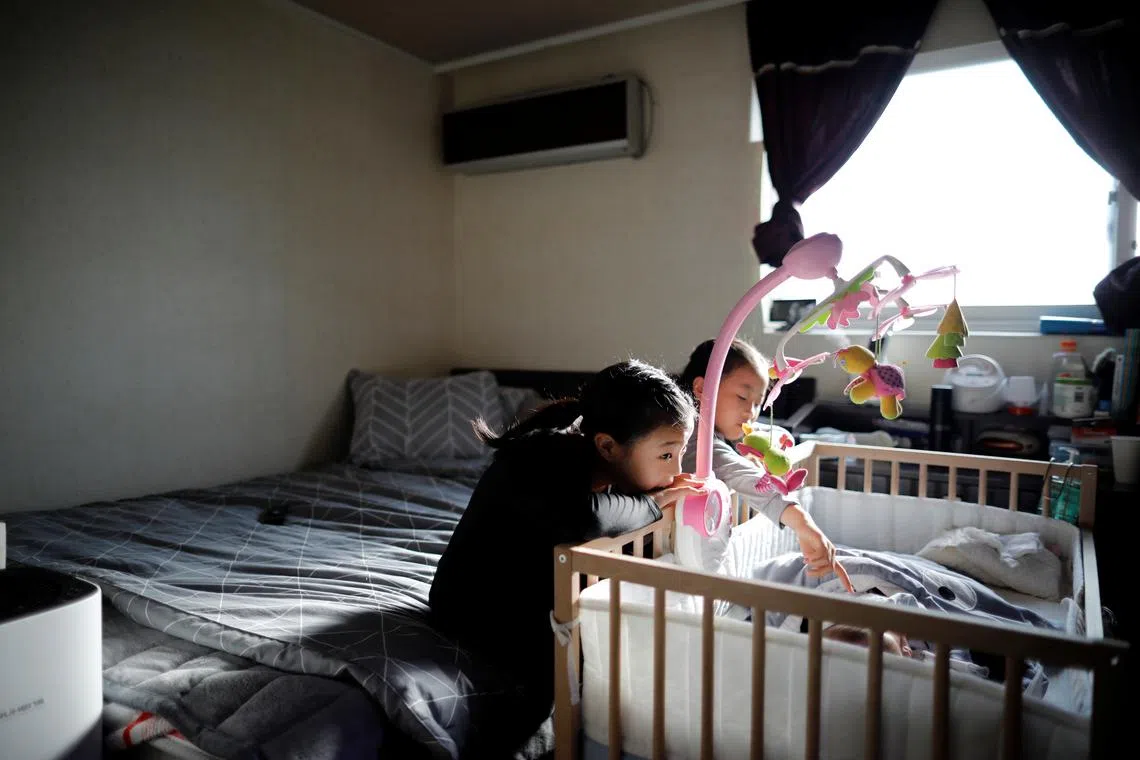South Korea birth rate rises for first time in 9 years, marriages surge
Sign up now: Get ST's newsletters delivered to your inbox

South Korea has rolled out various measures to encourage young people to get married and have children.
PHOTO: REUTERS
Follow topic:
SEOUL – South Korea’s fertility rate rose in 2024 for the first time in nine years, supported by an increase in marriages, preliminary data showed on Feb 26, in a sign that the country’s demographic crisis might have turned a corner.
Its fertility rate – the average number of babies a woman is expected to have during her reproductive life – stood at 0.75 in 2024, according to Statistics Korea.
In 2023, the birth rate fell for the eighth consecutive year to 0.72, the lowest in the world, from 1.24 in 2015, raising concerns over the economic shock to society from a fall at such a rapid pace.
Since 2018, South Korea has been the only member of the Organisation for Economic Cooperation and Development with a birth rate of below 1.
The country has rolled out various measures
“There was a change in social values, with more positive views about marriage and childbirth,” Ms Park Hyun-jung, an official at Statistics Korea, told a briefing, also citing the impact of a rise in the number of people in their early 30s and Covid-19 pandemic delays.
“It is difficult to measure how much each factor contributed to the rise in new births, but they themselves had an impact on each other too,” Ms Park said.
Marriages, a leading indicator of new births, jumped 14.9 per cent in 2024, the biggest spike since the data started being released in 1970. Marriages went up for the first time in 11 years in 2023, with a 1 per cent increase powered by a post-pandemic boost.
In the Asian country, there is a high correlation between marriages and births, with a time lag of one or two years, as marriage is often seen as a prerequisite to having children.
Across the country, the birth rate in 2024 was the lowest in the capital, Seoul, at 0.58.
The latest data showed 120,000 more people died in 2024 than the number of those who were born, marking the fifth consecutive year of the population naturally shrinking. The administrative city of Sejong was the only major centre where the population grew.
South Korea’s population, which hit a peak of 51.83 million in 2020, is expected to shrink to 36.22 million by 2072, according to the latest projection by the statistics agency. REUTERS

